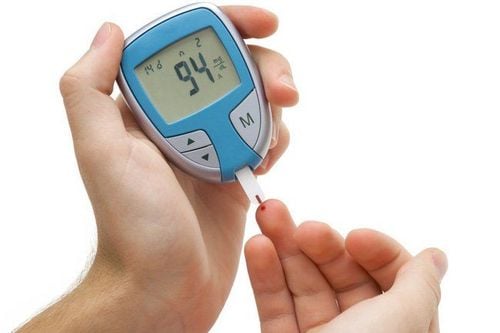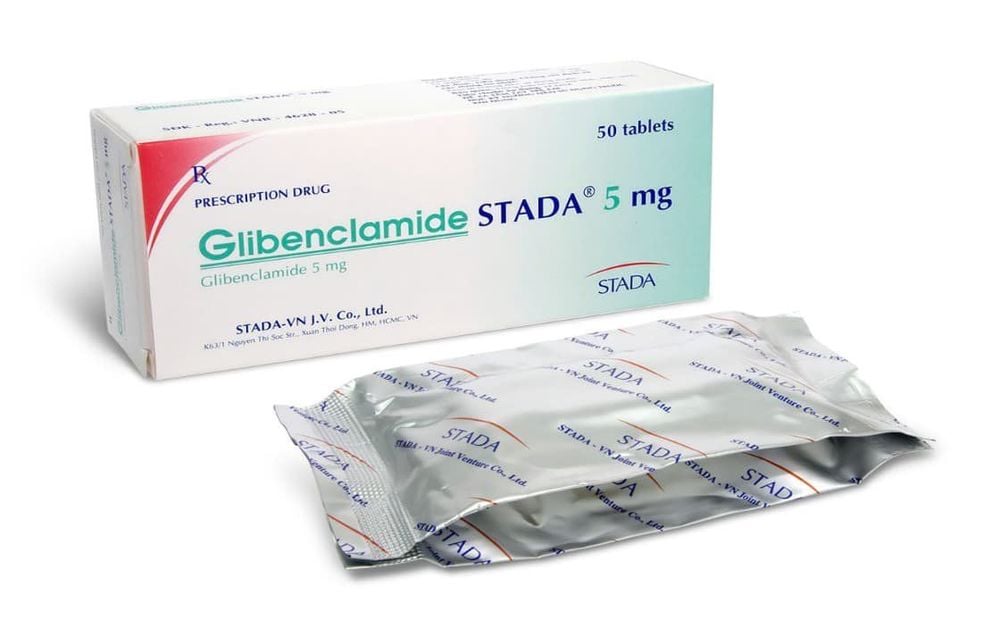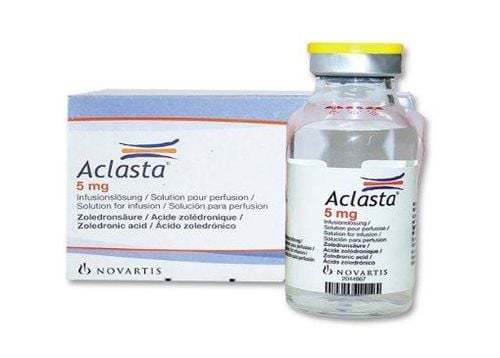This is an automatically translated article.
Posted by Specialist I Vo Khac Khoi Nguyen - Orthopedic Trauma Doctor - General Surgery Department - Vinmec Central Park International General Hospital.
Osteoporosis and diabetes are common diseases with high co-morbidities. These two diseases are closely related. Patients with diabetes are at high risk of fractures due to osteoporosis.
In patients with type 1 diabetes, this risk is increased six-fold due to low bone mass. Despite increased bone mineral density, patients with type 2 diabetes have twice the risk of fracture due to poorer bone quality. The decline in skeletal strength in type 2 diabetes is not reflected in bone mineral density, which is dependent on deterioration in bone quality rather than in bone mass.
1. Good blood sugar control helps reduce the risk of fractures

Studies have documented an increased risk of fracture with poor glycemic control. Poor glycemic control is defined by a glycated hemoglobin A1c (HbA1c) level ≥ 7%. Poor glycemic control promotes earlier and more severe microvascular complications. From there, it indirectly affects the changes in the microstructure of the skeletal system, reduces the skeletal strength, increases the risk of falls and fractures due to osteoporosis. Diabetes mellitus is a predictor of increased risk of mortality after fracture in hip fracture patients.
The issue of good blood sugar control should be understood as stabilizing blood sugar levels to achieve treatment goals and minimizing hypoglycemic events. Because hypoglycemia is an important cause of falls and fractures in people with diabetes. Optimal glycemic control is essential to reduce complications of diabetes, including osteoporosis. However, some antidiabetic drugs are associated with an increased risk of fracture.
2. Classic oral hypoglycemic tablets

Oral hypoglycemic drugs used to treat diabetes may affect fracture risk. Which includes groups of Thiazolidinediones, biguanides, sulfonylureas, specifically:
Thiazolidinediones (rosiglitasone and pioglitasone) increase the risk of fracture by 1.4 times. This group of drugs reduces bone mineral density in the lumbar spine, femoral neck. Treatment with thiazolidinediones increases the risk of fractures in women with type 2 diabetes, independent of the patient's age and duration of treatment. Thiazolidinediones activate proliferating peroxisome receptors (PPARs) that promote adipogenesis. Mesenchymal stem cells can differentiate into adipocytes and osteoblasts. PPARs are important regulators of adipocyte differentiation. The increased fracture risk with thiazolidinediones may be due to the activation of mesenchymal stem cells towards adipogenesis rather than bone formation. Biguanides are the most widely used in the treatment of diabetes. Typical for this group is metformin. Metformin is osteogenic in laboratory studies, but in clinical studies, metformin reduced bone mineral density in the lumbar spine and femoral neck. Some other studies show that Metformin increases bone formation, increases bone density or does not change bone density. In general, metformin does not appear to have a significant effect on skeletal health but this is still under investigation. Possibly it is the neutral or positive effect on the skeleton that makes the drug widely used and becomes a safe choice for skeletal health. The sulfonylurea group was associated with a 1.46-fold increased risk of femoral neck fracture. Although the mechanism by which sulphonylurea directly affects bone has not been demonstrated, epidemiological data have shown an increased risk of fracture in patients treated with this drug. Sulfonylurea increases fracture risk that can be explained by hypoglycemic events and increased risk of falls.
3. Insulin and fracture risk

Insulin is an anabolic hormone that acts on bone through the insulin receptors IRS-1 and IRS-2. IRS-1 stimulation affects bone turnover, while IRS-2 stimulation alters the balance between osteoclastogenesis and osteoclastogenesis. Insulin stimulates osteoblast proliferation, promotes collagen synthesis and increases glucose absorption. In type 1 diabetes, insulin and IGF-1 deficiencies, present at diagnosis, lead to impaired bone formation, abnormal mineralization, abnormal bone microarchitecture, and increased fragility. of bone and decreased peak bone mass. In type 2 diabetes, the stimulatory effects of insulin on osteoclastogenesis and bone mass increase through effects on the surface receptors IRS-1 and IRS-2 on osteoblasts.
Hypoglycemia is the most common event in insulin-treated type 2 diabetes. Hypoglycemia is strongly associated with falls and consequent fractures. With newer insulin preparations, the hypoglycemic side effects are less (eg, insulin glargine) so the risk of fracture is less. Patients taking insulin (and possibly insulin-stimulating oral tablets) are at increased risk of fracture, due to the indirect effects of falls from hypoglycemia. It is also possible that people once on insulin have longer diabetes and/or poorer glycemic control. At that time, diabetes-related complications such as retinopathy and peripheral neuropathy may indirectly contribute to an increased risk of falls and fractures.
4. New generation oral hypoglycemic tablets
Inhibitors of sodium glucose-2 (SGLT-2) co-transporter such as dapaglifozin do not affect bone turnover or bone density. Canaglifozin is associated with bone loss and an increased risk of hip fracture. Canaglifozin reduces bone density in the hip, increases bone turnover, and increases the rate of falls and fractures. The mechanism of canaglfozine's negative effects on bone is not entirely clear, but SGLT2 inhibitors inhibit renal glucose reabsorption and increase phosphate reabsorption, thereby increasing serum phosphate levels. cause PTH and increase bone turnover.
Glucagon-like peptide-1 (GLP-1) analogues and dipeptidyl peptidase-4 (DPP-4) inhibitors do not significantly alter fracture risk in diabetics. Neither DPP4 nor GLP-1 drug classes affect bone structure. This may be due to the positive effect of GLP-1 on bone formation and the low risk of hypoglycemia.
In summary, diabetes increases the risk of fracture by affecting skeletal strength. Optimal glycemic control is required, but we must also consider the specific (sometimes detrimental) effect of certain antidiabetic agents on fracture risk.
Vinmec International General Hospital always deploys a screening package for diabetes and dyslipidemia to help detect pre-diabetes early, accurately classify diabetes type, develop a nutritional regimen, according to the guidelines. Monitor to reduce the risk and complications caused by diabetes.
Please dial HOTLINE for more information or register for an appointment HERE. Download MyVinmec app to make appointments faster and to manage your bookings easily.
SEE MORE
Diagnostic criteria for diabetes and pre-diabetes What are the complications of diabetes? How does diabetes cause osteoporosis?














